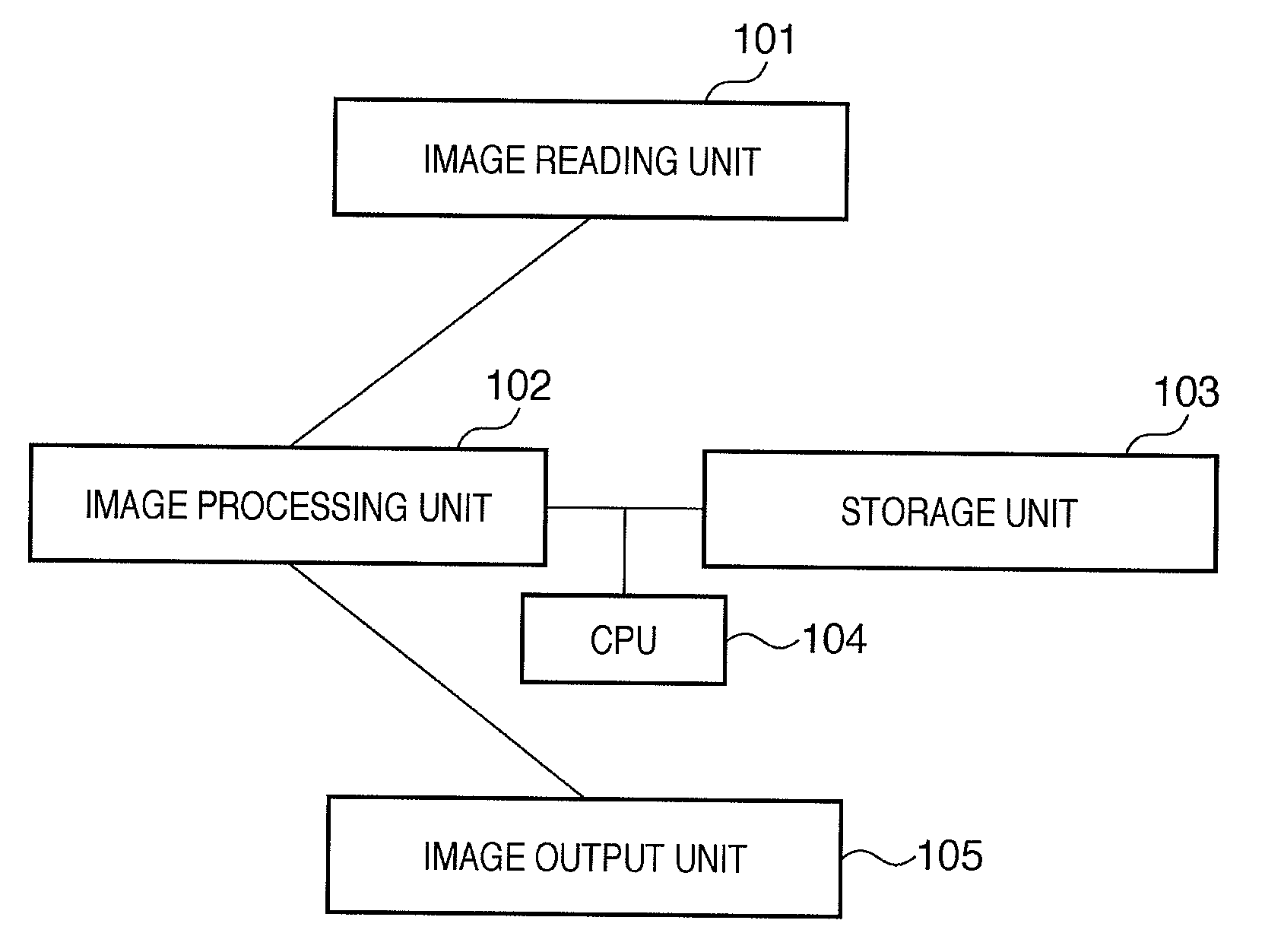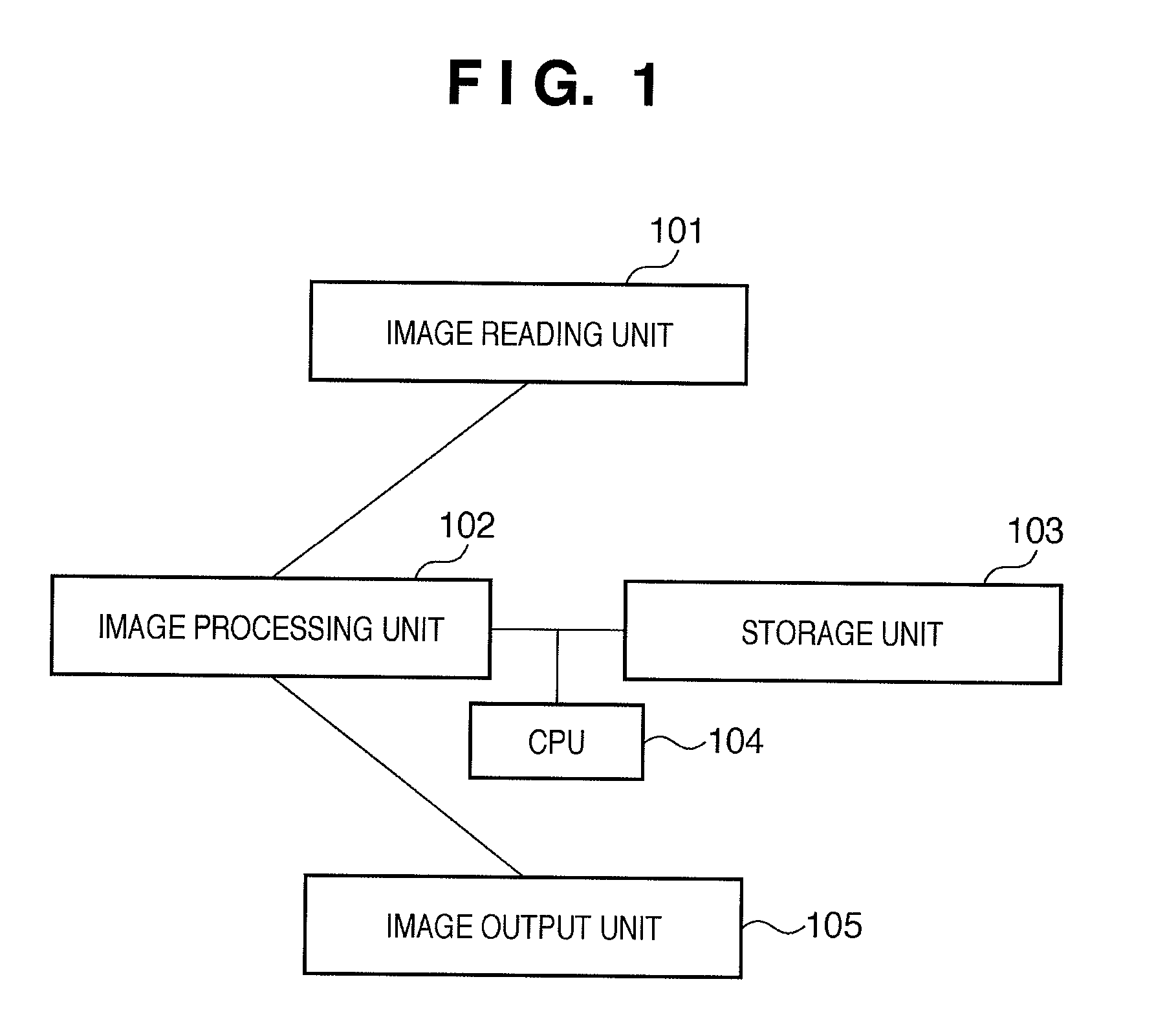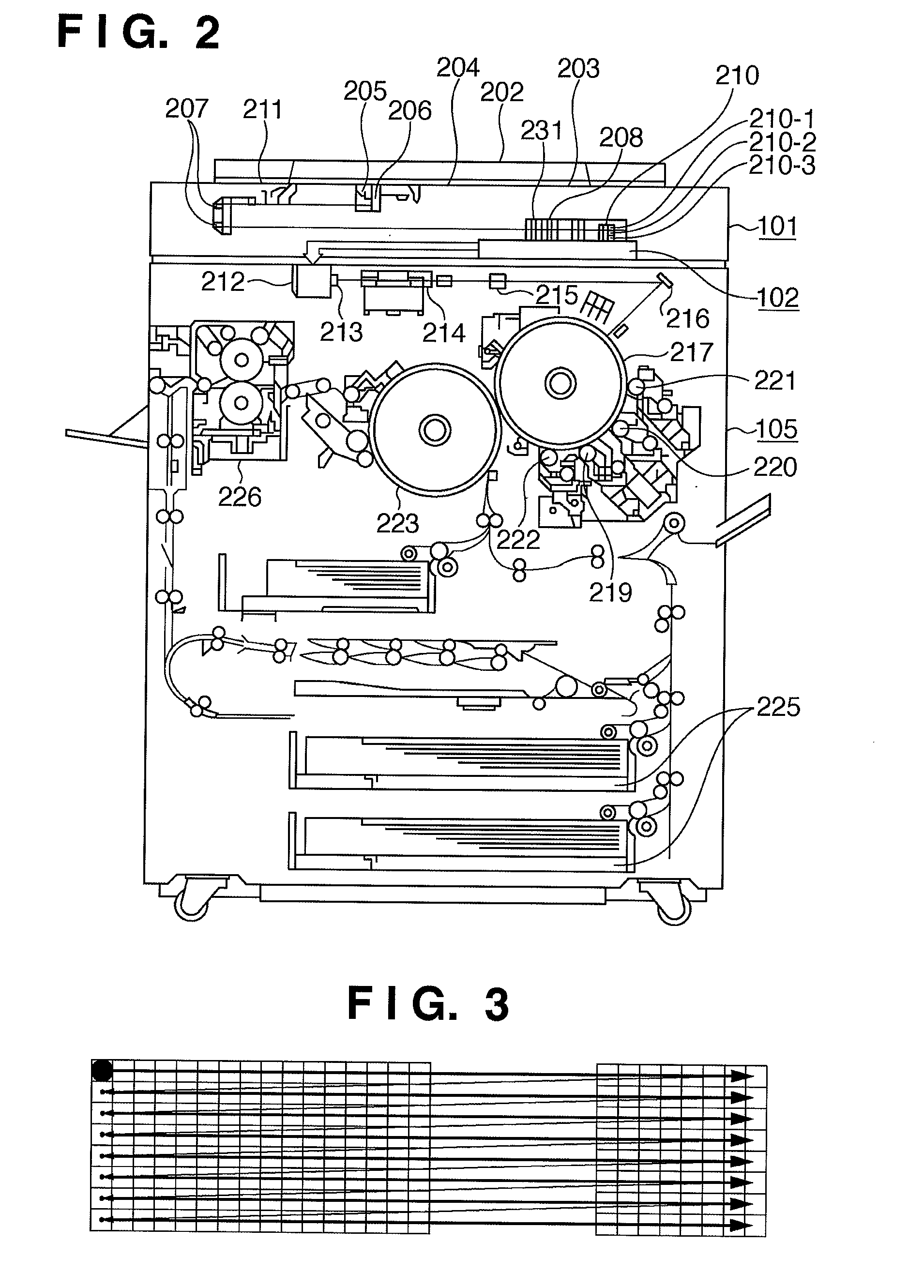Image forming apparatus, control method, and program
a technology of image forming apparatus and control method, which is applied in the direction of digital output to print units, instruments, computing, etc., can solve the problems of increasing the memory capacity required after, and achieve the effect of maintaining the image quality of the final output image and reducing the increase in line memory
- Summary
- Abstract
- Description
- Claims
- Application Information
AI Technical Summary
Benefits of technology
Problems solved by technology
Method used
Image
Examples
first embodiment
[0047]The first embodiment of the present invention will be described. The arrangement and outline of an apparatus to which the present invention can be applied will be described first.
[0048]
[0049]FIG. 1 is a block diagram showing an example of the arrangement of an image forming apparatus according to an embodiment of the present invention. As shown in FIG. 1, the image forming apparatus includes an image reading unit 101, an image processing unit 102, a storage unit 103, a CPU 104, and an image output unit 105. Note that the image forming apparatus can be connected to a server to manage image data, a personal computer (to be referred to as a PC hereinafter) to instruct the execution of printing, and the like via a network or the like.
[0050]The image reading unit 101 reads a document image and outputs image data. The image processing unit 102 converts print information containing image data input from the image reading unit 101 or an external device such as a PC into intermediate i...
second embodiment
[0078]Image processing according to the second embodiment of the present invention will be described below. This embodiment will exemplify a case in which error diffusion processing is performed when halftone processing is performed. As a method of converting an image made of multilevel pixel data into binary image data while macroscopically storing tone, an error diffusion method is known in addition to the above method using the dither threshold matrix.
[0079]This embodiment is the same as the above embodiment in the steps in FIG. 7 in which after downsampled low resolution image is upsampled by various types of image processing, halftone processing is performed. Therefore, this procedure is also applied to the second embodiment. The second embodiment differs from the first embodiment in that binarization using the error diffusion method is performed instead of binarization using a dither threshold matrix in halftone processing. In this case, it is necessary to handle error data an...
third embodiment
[0086]Image processing according to the third embodiment of the present invention will be described below. This embodiment will exemplify a case in which when halftone processing is performed, an average density storage method is performed, that is, each pixel is binarized while the average density of neighboring pixels is held. This embodiment is the same as the above embodiment in the steps in FIG. 7 in which after downsampled low resolution image is upsampled by various types of image processing, halftone processing is performed. Therefore, this procedure is also applied to the third embodiment. This embodiment differs from the first and second embodiments in that binarization is performed by using the average density storage method in halftone processing. In this case, it is necessary to handle error data and data for the calculation of an average density in addition to image data.
[0087]A typical technique of the average density storage method will be exemplified with reference ...
PUM
 Login to View More
Login to View More Abstract
Description
Claims
Application Information
 Login to View More
Login to View More - R&D
- Intellectual Property
- Life Sciences
- Materials
- Tech Scout
- Unparalleled Data Quality
- Higher Quality Content
- 60% Fewer Hallucinations
Browse by: Latest US Patents, China's latest patents, Technical Efficacy Thesaurus, Application Domain, Technology Topic, Popular Technical Reports.
© 2025 PatSnap. All rights reserved.Legal|Privacy policy|Modern Slavery Act Transparency Statement|Sitemap|About US| Contact US: help@patsnap.com



